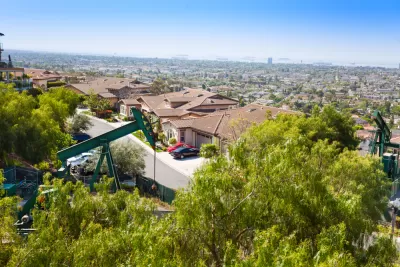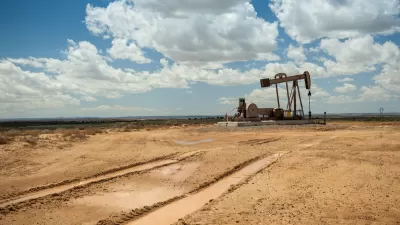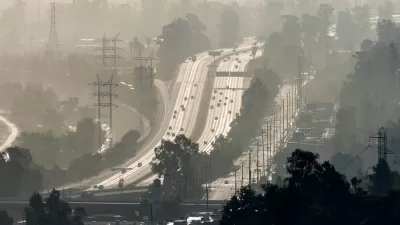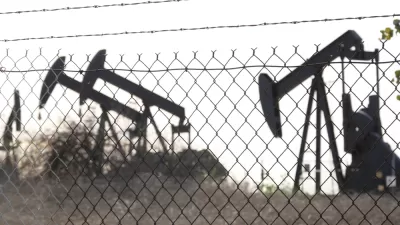The Department of Public Health recommends taking action to better protect residents from oil operations that are sometimes only a few feet from where people live, work, eat, play and study.

There are more than 5,000 oil wells scattered across Los Angeles County, with more than 3,000 of them active, and at least some of them located within a few feet of homes, restaurants, schools, parks, or other public areas.
A new report from the county Department of Public Health suggests the urban wells negatively impact the health of those who spend time near them, and recommends increasing regulation to mitigate those effects.
From KPCC:
"The study comes at a time when oil and gas companies in greater Los Angeles are under increasing pressure from environmental justice organizations who question whether it make sense to continue oil extraction in dense, urban areas — and whether the practice aligns with the state's climate goals."
For many years, there has been ample anecdotal evidence—including an incident several years ago when EPA officials became ill after touring a site—that living near the wells causes "nose bleeds, headaches and difficulty breathing," but officially studying the issue has been challenging because it's difficult to determine what is caused by air pollution from the wells, and what is caused by air pollution from everything else.
A recent study from Occidental, however, found "heightened rates of asthma in densely populated Los Angeles neighborhoods located near active oil-development sites."
And, according to KPCC, "the City of Los Angeles is currently studying the public health benefits and economic consequences of phasing out oil wells around schools, houses and other public places."
"Uduak-Joe Ntuk, the city’s petroleum administrator, said he would use the county’s report in his analysis, but had no word on when it would be completed."
FULL STORY: LA County isn’t doing enough to protect people living near oil wells, study says

Planetizen Federal Action Tracker
A weekly monitor of how Trump’s orders and actions are impacting planners and planning in America.

Map: Where Senate Republicans Want to Sell Your Public Lands
For public land advocates, the Senate Republicans’ proposal to sell millions of acres of public land in the West is “the biggest fight of their careers.”

Restaurant Patios Were a Pandemic Win — Why Were They so Hard to Keep?
Social distancing requirements and changes in travel patterns prompted cities to pilot new uses for street and sidewalk space. Then it got complicated.

Maui's Vacation Rental Debate Turns Ugly
Verbal attacks, misinformation campaigns and fistfights plague a high-stakes debate to convert thousands of vacation rentals into long-term housing.

San Francisco Suspends Traffic Calming Amidst Record Deaths
Citing “a challenging fiscal landscape,” the city will cease the program on the heels of 42 traffic deaths, including 24 pedestrians.

California Homeless Arrests, Citations Spike After Ruling
An investigation reveals that anti-homeless actions increased up to 500% after Grants Pass v. Johnson — even in cities claiming no policy change.
Urban Design for Planners 1: Software Tools
This six-course series explores essential urban design concepts using open source software and equips planners with the tools they need to participate fully in the urban design process.
Planning for Universal Design
Learn the tools for implementing Universal Design in planning regulations.
Heyer Gruel & Associates PA
JM Goldson LLC
Custer County Colorado
City of Camden Redevelopment Agency
City of Astoria
Transportation Research & Education Center (TREC) at Portland State University
Camden Redevelopment Agency
City of Claremont
Municipality of Princeton (NJ)





























